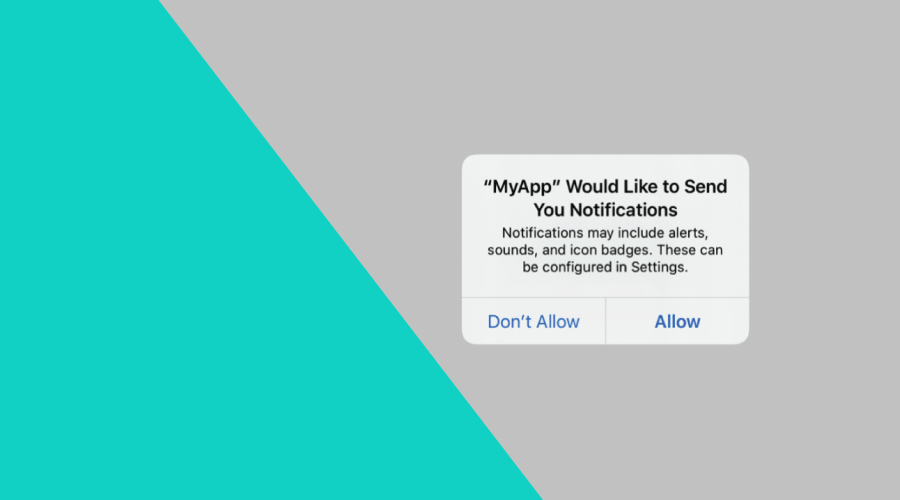Seamless Push Migration, ensuring a smooth transition for your users

How to migrate from another provider without disrupting user experience

Push notifications have emerged as a vital lifeline between brands and their audiences, driving direct engagement and real-time interactions like never before. And, as more brands consider moving to Notificare, the prospect of switching push notification providers can seem daunting, especially when factoring in potential impacts on user experience.
In this blog post, we’ll explore push migration from the end user’s perspective, addressing common questions and concerns to help marketers navigate a seamless transition that preserves user engagement and trust.
Understanding push migration from an end user perspective
Push migration refers to the process of transferring your push notification services from one provider to another. From the perspective of an end user, the ideal migration is one that goes unnoticed—they continue to receive notifications as usual, with no interruptions or changes in the content they receive. The primary goal of push migration is to ensure that this transition happens seamlessly, maintaining the consistency and reliability that users have come to expect.
For marketers, this process involves much more than just a simple switch. A successful migration requires careful planning and execution to avoid communication gaps, loss of engagement, and potential data loss. However, when done correctly, push migration can be managed in a way that prioritizes the user experience, ensuring that notifications remain uninterrupted and engagement levels are maintained.
By focusing on the user's perspective, marketers can achieve a smooth transition that not only preserves existing relationships but also strengthens the effectiveness of their campaigns.
Do users notice when switching providers?
One of the most frequently asked questions by marketers during push migration is whether users will notice when they switch from one provider to another. The good news is that, with proper planning, users are unlikely to detect any change. The backend processes together with the SDK, responsible for sending push notifications, are invisible to users, meaning that as long as the migration is handled correctly, the user experience remains consistent.
To ensure a seamless transition, it's essential to, at first, maintain the same notification formats, branding, and delivery schedules that users are accustomed to. Consistency is key to avoiding any disruptions in the user experience. When users receive notifications that look and feel the same as before, they are less likely to notice that anything has changed. This continuity helps preserve user trust and keeps them engaged with your brand.
Once the migration is complete, however, your users can benefit from an enhanced experience through Notificare's rich notification formats, including interactive elements, in-app messaging, inbox features, and live activities. These advanced tools not only elevate the user experience but also provide you with more dynamic ways to engage your audience, ultimately driving deeper interaction and increasing the effectiveness of your campaigns. And, this not only improves engagement rates but also drives higher ROI from push notification campaigns.
Do users need a new opt-in?
Another significant concern for marketers is whether users will need to re-opt-in for notifications after the migration. This is a critical issue because requiring users to opt-in again can lead to a drop in engagement, as not all users may choose to re-subscribe. However, if handled correctly, there is no need for users to go through the opt-in process again.
When migrating push notifications, it's important to understand that user opt-ins are stored directly from the user's device rather than with the notification provider. This means that when you implement the new SDK, the device automatically shares its token with the new provider, ensuring that all existing opt-ins are seamlessly maintained without requiring any additional action from the user. By preserving these elements, users can continue to receive notifications without needing to re-opt-in.
This not only simplifies the migration process but also ensures that you maintain your existing audience's engagement without interruption. Additionally, respecting users' initial consent and preferences reinforces their trust in your brand.
Ensuring a Smooth Migration Process
To achieve a seamless push migration, marketers should adopt a strategic approach that includes careful planning, and thorough testing. Start by conducting a detailed audit of your current push notification setup, identifying all critical components such as user tokens, segmentation criteria, campaign types and engagement metrics. This audit forms the foundation of a migration plan that addresses potential challenges proactively.
To further support your migration process, Notificare offers a comprehensive Migration Guide that walks you through each step of transitioning from your current push notification provider. This guide is designed to make the migration as seamless as possible, offering detailed instructions, best practices, and tips to ensure that all aspects of your user data, notifications, and engagement strategies are preserved.
Migrating to Notificare doesn't have to be a disruptive experience for your users. With careful planning, the right tools, and an understanding that user opt-ins are stored on the device, you can ensure a seamless transition that preserves engagement.
Notificare’s advanced features, such as rich notification formats and interactive elements, offer an opportunity to enhance the user experience post-migration, making this change not just a maintenance step but a strategic upgrade that can drive even greater results in your campaigns.
As always, you can find us available for any question you might have via our Support Channel.
